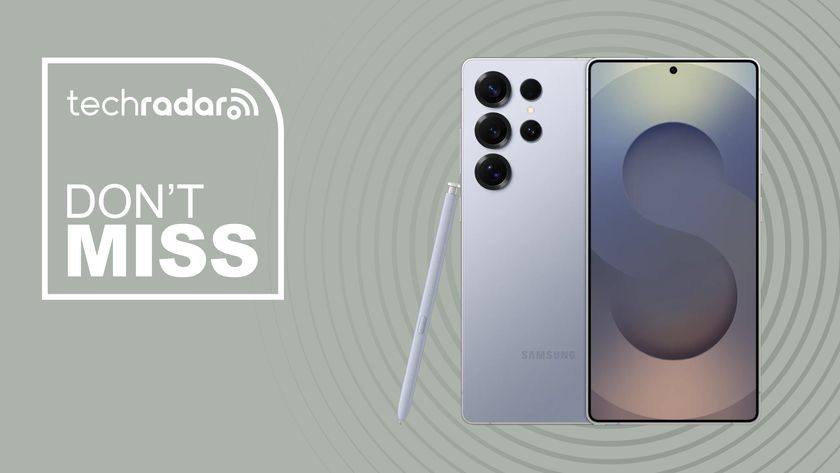How far are we from the perfect smartphone?
And what would it even look like?
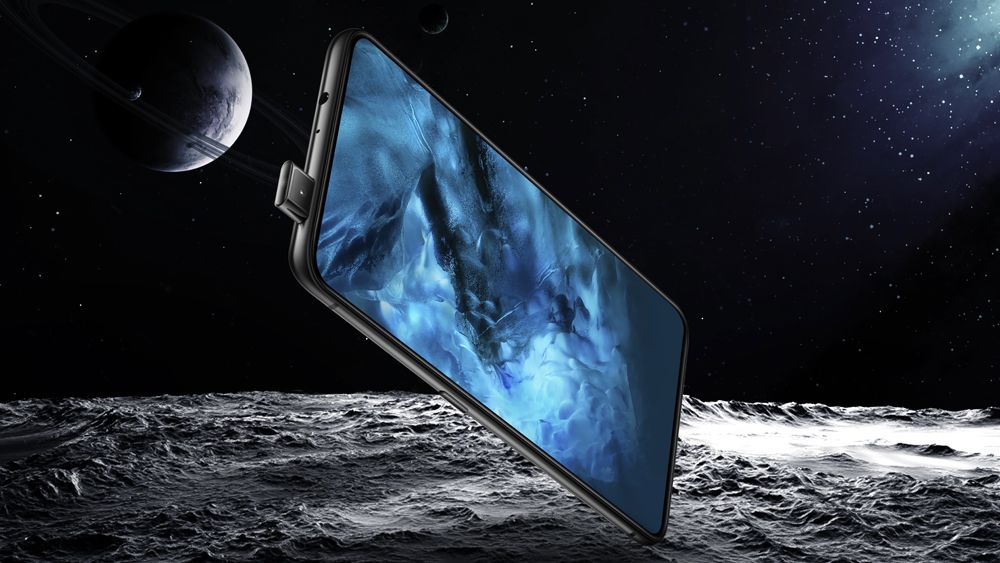
Main image: The latest innovations in smartphone design include a pop-up selfie camera on Vivo's Nex
The arrival of the first iPhone in 2007 triggered a tidal wave of innovation that has transformed the devices in our pockets. Thanks to a combination of furious competition between the biggest phone manufacturers on the planet and a steady stream of new tech, the smartphone space looks very different now to how it did even five years ago, let alone 11.
Three years after the iPhone, Samsung introduced its own take on the top-end smartphone, and since then we’ve seen multiple players jostling for a piece of the action including LG, Sony, HTC, Huawei, and OnePlus. We’ve also seen both the spectacular fall and less-spectacular resurgence of BlackBerry and Nokia.
Despite the introduction of new features like security tech, bigger and better screens, high-end processing tech, impressive cameras and improving battery life, we often hear it said that smartphone innovation has dried up – but while the pace of innovation may have slowed down, it’s far from over.
- Do you have a brilliant idea for the next great tech innovation? Enter our Tech Innovation for the Future competition and you could win up to £10,000!
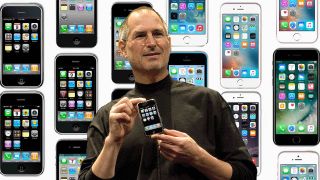
New phones in recent years have been getting more incremental improvements to features, and refinements of already existing technology. For example, processing power has been steadily increasing, while in the past year or so we’ve seen the introduction of artificial intelligence to make our smartphones smarter than ever before.
Another trend is manufacturers embracing full-screen phones that don't increase the size of the whole device. By shrinking down bezels and bringing the important sensor tech into a notch – that's a cutout section at the top of the display – companies such as Apple with its iPhone X have managed to include larger screens while keeping the overall size of their handsets largely unchanged.
While some of these features are certainly interesting they're not exactly game-changing, so are we getting close to hitting peak smartphone? Is innovation in the space ending, or are we just experiencing a lull before the pace picks up again? And could we ever see the perfect smartphone?
Alex Newson, Senior Curator at The Design Museum in London told TechRadar: "If you ever suggest something is perfect, you’re not looking for a way to improve it.
Get daily insight, inspiration and deals in your inbox
Sign up for breaking news, reviews, opinion, top tech deals, and more.
"That’s a strange position to take, and I feel you should always challenge your work (and other people's work) to further improve it."
Who'll be the first to fold?
No one knows for sure what the next big innovation in phones will be, but there are some impressive upgrades in the pipeline that we may see coming to our handsets in the next few generations of devices.
Two new technologies in particular are nearing market-readiness. The first of these – and it will probably feature on a phone first – is foldable screen technology.
If it’s done right, this will allow for a phone that can folded up so that it takes up less space in your bag or pocket. For example, you could potentially roll it up and put it into your pocket, even though the phone might have a 10-inch screen more akin to that of a tablet.
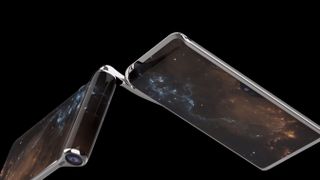
Samsung, LG and Huawei are all known to be working on devices of this type right now, and each manufacturer is developing its own solutions to get over the issues involved in creating a screen that can bend.
Samsung is expected to be first to market with its heavily rumored Samsung Galaxy X device, which is expected to be released early 2019 and may be unveiled at CES 2019. While it may not the flagship device for the company (that’ll be the Samsung Galaxy S10) it will be a big leap forward for phone tech.
The jump to 5G
The second technology that we may be seeing on our phones relatively soon is 5G connectivity. Remember the boost you got in speeds when you switched from a 3G device to the 4G network? Well, the jump to 5G is expected to be a lot more significant than that.
It’s expected that this next-generation technology will enable you to play 4K content on the move, stream games directly to your phone and much more. 5G won’t be on your phone for a while yet, but it’s something that's definitely in the works, and which is set to change the way we use our devices.
The quest for perfection
So how about that perfect phone? The truth is, 'perfect' in this context is difficult to define. Different people want different features, so not everyone will agree on what’s the ideal device. It’s part of the reason why we're starting to see specialist phones such as the Razer Phone, which is specifically designed for gaming, or the Sony Xperia XZ2 Premium, which is close to release at the time of writing and which is optimized for those who want to watch 4K video and movies.
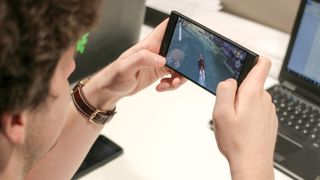
Finding a way to make a phone that suits everyone is a challenge that manufacturers have been wrestling with since the days of feature phones.
Perhaps the best example comes from Motorola, and a product it started work on in 2013. Project Ara, which was soon bought by Google, was set up with the aim of developing a modular phone, one that you could tailor specifically to your needs.
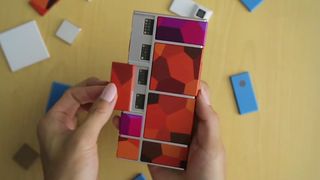
There would be a starter device – that was called the Endos – which would be the basic frame that would become your phone. You would then be able to add the features you wanted by buying extra 'modules' and slotting them into the phone.
You’d need a basic set of modules to make a working phone, but you could then add extra or upgraded tech on top of that to personalize it.
Want a super powerful high-end camera that you don’t mind protruding from the phone slightly? You'd be able to get one. More interested in having a huge battery pack that would last for two days? You could order one online that would be thicker than average, but would do the job.
Project Ara wasn’t to be, and it was cancelled in 2016. In the meantime, however, Motorola had been adopting modular designs for its flagship phones – a feature it called Moto Mods, and you can still buy them now. This is a much less ambitious idea, with a more limited choice of modules, but the basic idea – that you can start with one device and add the features you need – is the same.
Perhaps one day we'll see a fully modular phone come to the market, but in 2018 no company seems to be developing this particular idea.
Instead, companies such as Vivo and Oppo are experimenting with pop-up camera technology on the latest devices to fit in the shooting tech without encroaching on the increasingly common all-screen design
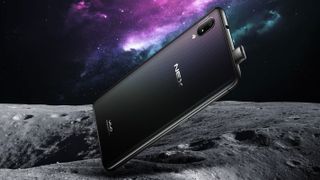
It's also possible that the form of our phones may change dramatically in the quest for the perfect device.
There are some who think smart glasses will replace the traditional tech we have in our pocket. Ex-Wall Street analyst Gene Munster, chief scientist at Facebook’s Oculus Research Michael Abrash, and Alex Kipman, leader of the team that developed Microsoft Hololens, are all believers in the idea that some sort of smart eyewear will eventually replace the established smartphone design.
The Design Museum's Alex Newson doesn't think that will happen soon though. "The phone still seems to be the place where people want the convergence of features," he said. "When you put too much into a watch or too much into a pair of glasses, it has been ultimately rejected.
"The phone seems to be the place where consumers what the majority of their convergence. There would have to be a significant shift in the way they use their devices for that to change."
Perhaps one day we will indeed be wearing our phones on our faces, enabling us to message, search, play games and more all without having to root around in our pockets, and by barely lifting a finger; but whatever form the phones of the future take, it's likely that hypothetical perfection will remain just over the horizon. It's hard to imagine us ever reaching the stage where we can agree that we've seen the perfect smartphone – or even on what it should look like.
TechRadar's Next Up series is brought to you in association with Honor

James is the Editor-in-Chief at Android Police. Previously, he was Senior Phones Editor for TechRadar, and he has covered smartphones and the mobile space for the best part of a decade bringing you news on all the big announcements from top manufacturers making mobile phones and other portable gadgets. James is often testing out and reviewing the latest and greatest mobile phones, smartwatches, tablets, virtual reality headsets, fitness trackers and more. He once fell over.

